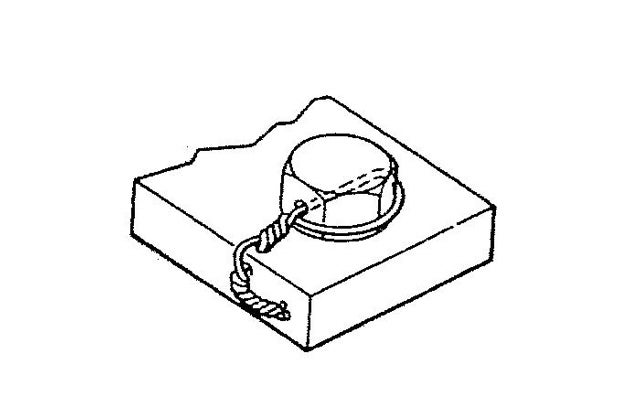
Picture this: you're in a race and making good time. The engine is running clean and you're not tired. Talk about fun! Right about this time, there exits from the bike a sound that shouldn't be there: crack, ping!
Right then and there, you wish you had done all of the critical nuts and bolts with safety wire as you have been planning to for some time. Most riders take what seems like a fair amount of time torquing down all nuts and bolts and using Loctite on the critical ones. But if you are a serious racer, much more than that must be done to ensure a complete bike at the end of the day.
Safety wiring is the answer, but it must be done properly. Failure to use the right patterning sequence can still mean lost nuts and bolts. The aircraft industry probably uses safety wire more than anybody else, simply because it's even more critical on an aircraft.
If you don't want to go through all the trouble of drilling enough bolts, predrilled aircraft nuts and bolts can be purchased for replacement. Generally they are better quality than the original items. These can be purchased in any aircraft parts supply house, well-stocked hardware stores, or a competition-oriented bike shop.
Kits are available if you want to drill your own. There are a number of kits on the market to make the job easier. They usually consist of an adjustable holder and small, hardened drill bits. Most of them are worth the money. Some are junk.
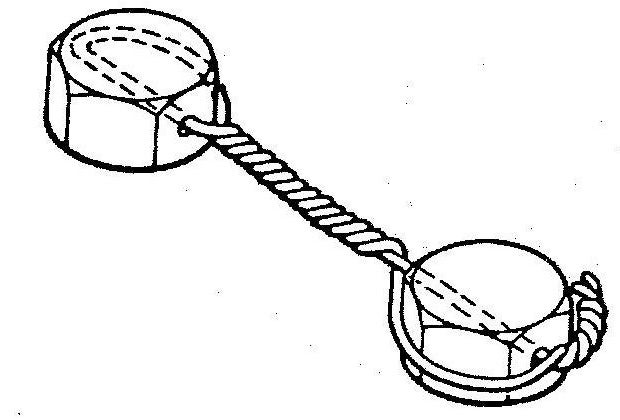
The job is much easier with a good pair of safety wire pliers. Standard safety wire is 0.032 inches in diameter and is strong enough for any fixture on a motorcycle. Never reuse old wire, as you can never tell when it is been pushing past the safe point and is ready to break. Fresh wire is so cheap that there is no excuse to reuse the old stuff.
All wires should be replaced so the loosening of the nut and bolt will tend to tighten the safety wire. All nuts or bolts should be clean when installed, or they may loosen when the dirt or rust is present. Some nuts or bolts must be torqued down to certain specified poundages. Check your workshop manual for your particular bike.
Here's where common sense and judgment is needed: Let's say the specified poundage is 45 foot-pounds. Tighten the nut to approximately 40 foot-pounds, then bring the slot around to have the hole lineup at 45 pounds and back off searching for a line-up point.
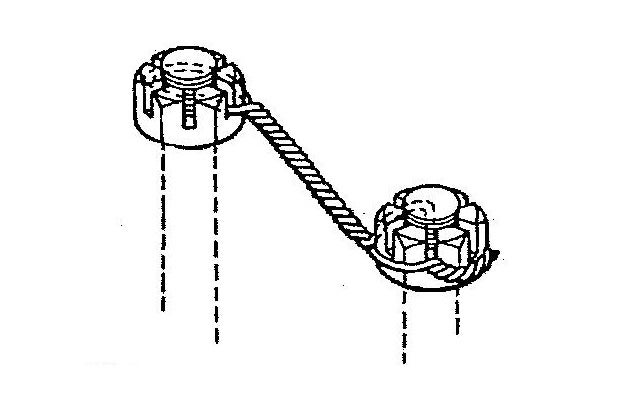
Itís important in some instances to use castellated nuts. For this reason, it's best to use these in all critical torque areas. See illustration No.4. This shows two castellated nuts interconnected with a double-twist wire.
Whenever possible, use the double twist method. If the nuts are fairly close together, say 5 to 7 inches, they may be connected to each other. If they're far apart, they should be individually secured to another service. See illustration No. 1.
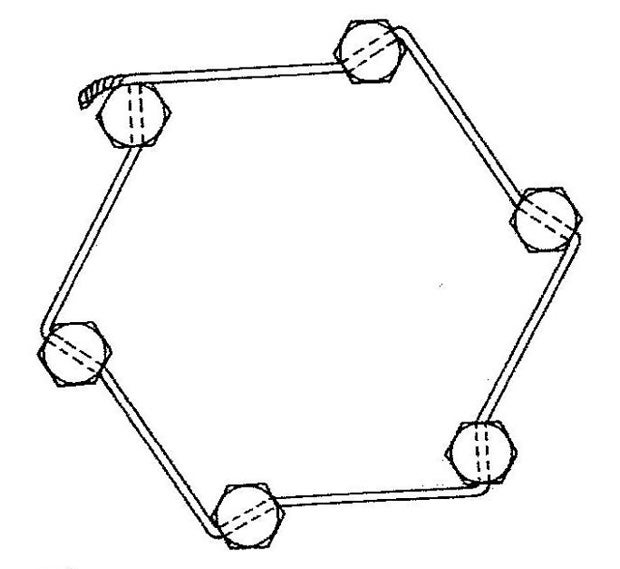
One of most critical areas on any motorcycle is the rear sprocket. Few items take as much abuse or stress as this. Illustration No. 3 shows the correct pattern to use. Any close cluster of bolts and nuts can be joined in this fashion.
Some people run the loop of safety wire over the top of the bolt. We feel this is less desirable than running it to one side. It should be run over to the side and push in the direction of the thread rotation. In other words, it must be twisted clockwise for the right-hand threads, and counterclockwise for the left-hand threads.
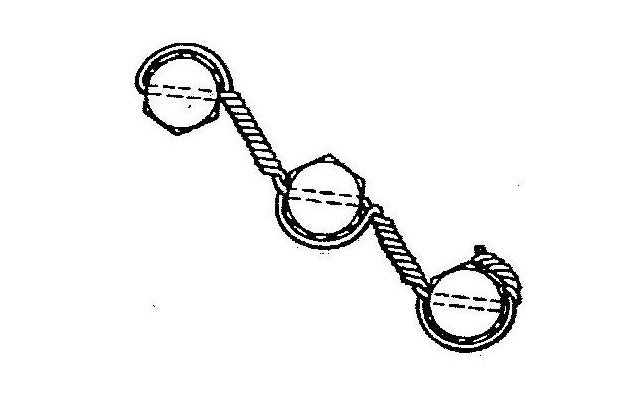
Don't over tighten. After the item is safety wired, check for slop in either direction of twist and bend the left over and in out-of-the-way. Failure to do this can cause a rip in expensive leathers, or less expensive, more painful skin.


 Your Privacy Choices
Your Privacy Choices